In the intricate tapestry of canine behavior, the mystery of why some dogs seek cuddles while others seem indifferent unravels a fascinating narrative of individuality.
As we embark on uncovering the nuanced reasons behind dogs' divergent preferences for physical affection, a behavior expert sheds light on the intricate interplay of factors shaping their unique tendencies.
From breed-specific traits to past experiences and subtle communication cues, the realm of cuddling behaviors in dogs beckons us to explore the intricate dance of canine emotions and connections.
Stay tuned to unravel the captivating insights into why our furry friends exhibit such varied inclinations towards cuddling.
Key Takeaways
- Dogs' cuddling preferences vary based on factors like breed, genetics, and past experiences.
- Understanding a dog's body language helps determine if they enjoy cuddling.
- Individual personalities greatly influence a dog's inclination to cuddle.
- Bonding activities beyond cuddling, like playtime and training, are essential for strengthening the dog-owner relationship.
Reasons Dogs Like to Cuddle
When dogs choose to cuddle, they are expressing their innate desire to bond with their owners and strengthen their emotional connection. This act of physical closeness allows dogs to show affection and loyalty, viewing their owners as part of their pack. Cuddling also helps dogs create positive memories and express their fondness for their human companions.
In addition, dogs may seek comfort through cuddling during times of fear or uncertainty, relying on the soothing presence of their owners. By engaging in cuddling, dogs not only demonstrate trust but also establish strong emotional bonds that contribute to their overall well-being and happiness.
Reasons Dogs Dislike Cuddling
Contrary to popular belief, dogs' aversion to cuddling can be influenced by various factors beyond mere preference. Some dogs may dislike cuddling due to their breed characteristics, past negative experiences, or simply their individual personalities. Understanding these reasons can help owners respect and cater to their pet's needs better. Here is a breakdown of potential reasons why some dogs may not enjoy cuddling:
| Factors Influencing Dogs' Dislike for Cuddling | Description | Example Breeds |
|---|---|---|
| Past Traumatic Experiences | Dogs that have been mishandled or traumatized may associate cuddling with fear or discomfort. | Rescued dogs, abused dogs |
| Independent Nature | Certain breeds are known for their independent personalities, making them less inclined to seek physical closeness. | Huskies, Shiba Inu |
| Health Issues | Dogs experiencing pain or discomfort may resist cuddling due to physical discomfort. | Senior dogs, dogs with arthritis |
Affection Preferences in Dogs

Understanding the diverse ways in which dogs express their affection and the varied preferences they may have towards physical closeness is crucial in fostering a strong and healthy bond between canines and their owners.
Dogs, like humans, have individual preferences when it comes to showing and receiving affection. Some dogs may enjoy cuddling, seeking physical closeness as a way to bond and feel secure, while others may prefer different forms of interaction or personal space.
Factors such as breed tendencies, past experiences, and personality traits can influence a dog's affection preferences. By recognizing and respecting these differences, pet owners can better cater to their dog's needs, ultimately strengthening the emotional connection and overall well-being of their furry companions.
Understanding Dog Body Language
A key aspect of canine communication and interaction involves interpreting the subtle cues conveyed through dog body language. Dogs use their bodies to communicate emotions, intentions, and reactions. Understanding dog body language can help decipher whether a dog is comfortable, anxious, scared, or playful.
Signs such as tail wagging, ear position, body posture, facial expressions, and vocalizations all play a role in decoding a dog's feelings. For instance, a relaxed body, loose tail wagging, and soft eyes indicate a dog's contentment and readiness for affection. On the other hand, a stiff body, tucked tail, raised hackles, or bared teeth may signal discomfort or aggression.
Cuddling Vs. Proximity Affection
In exploring the dynamics of canine affection, distinguishing between cuddling and proximity affection sheds light on varying ways dogs express their bond with humans.
Cuddling involves physical contact, where a dog seeks close interaction, often leaning against or snuggling with their human. This behavior showcases a desire for warmth, comfort, and emotional connection.
On the other hand, proximity affection refers to dogs showing their bond by being physically close without necessarily engaging in direct physical contact. Examples include sitting nearby, resting at their owner's feet, or following them from room to room.
Understanding these distinctions can help pet owners recognize and appreciate the diverse ways dogs demonstrate their affection and strengthen their relationships.
Influence of Breed on Cuddling
Exploring the relationship between canine breeds and their predisposition towards cuddling reveals intriguing insights into the varying affectionate behaviors displayed by different dog breeds. Anecdotal evidence suggests that certain breeds, such as toy breeds, bully breeds, and bird dogs, are more inclined to cuddle due to their affectionate nature.
Despite their size, giant breeds like Great Danes and mastiffs can also exhibit a penchant for snuggling. However, breed preferences for cuddling can differ among individual dogs, and a dog's inclination to cuddle may evolve over time.
It is essential to consider the unique traits of each dog rather than generalize based solely on breed tendencies when assessing their cuddling behavior.
Giant Breeds and Cuddling
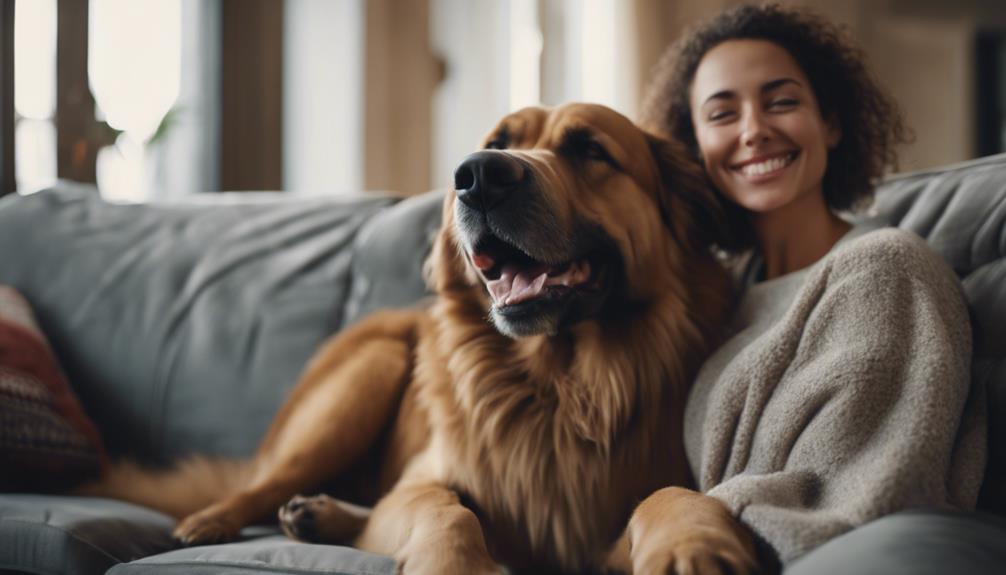
Delving into the dynamics of cuddling behavior among giant dog breeds sheds light on their unique tendencies towards affectionate interactions. Despite their imposing size, giant breeds like Great Danes and mastiffs can be surprisingly affectionate and enjoy cuddling with their owners. These gentle giants often seek physical closeness and warmth, using their massive frames to provide a sense of security and comfort.
While their cuddling preferences may differ from smaller breeds, giant dogs are known for their loyalty and devotion, making them excellent companions for those who appreciate a snugly partner. Understanding the individual personality of each giant breed is essential in fostering a strong bond through cuddling, ensuring a mutually rewarding and affectionate relationship.
Changing Cuddling Preferences
Understanding the evolving nature of cuddling preferences in dogs, particularly how it may vary over time, sheds light on the dynamic interactions between owners and their canine companions. A dog's cuddling preferences can change due to various factors such as age, health, environment, and past experiences.
For instance, a dog that used to be aloof may become more affectionate as it grows older and forms a stronger bond with its owner. Conversely, a previously cuddly dog may become less inclined to cuddle due to aging-related issues or changes in its routine.
Monitoring and adapting to these shifting preferences can help enhance the bond between a dog and its owner, ensuring a fulfilling and harmonious relationship.
Individual Dog Traits
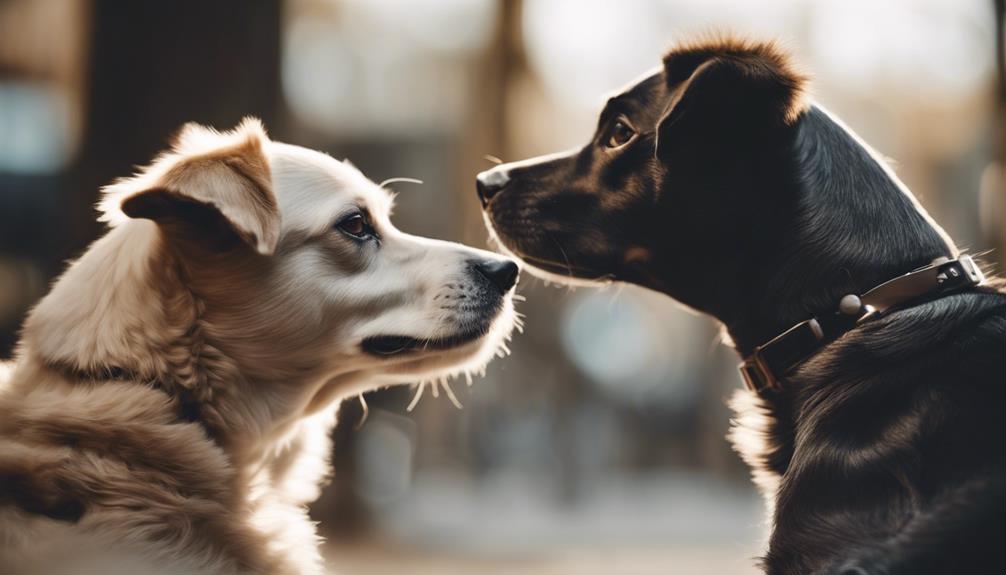
An understanding of individual dog traits is essential in tailoring care and training methods to meet the specific needs of each canine companion.
- Dogs exhibit unique personalities that influence their behavior and preferences.
- Breed tendencies can play a role in a dog's inclination towards cuddling.
- Size doesn't always dictate a dog's cuddling preferences, as giant breeds can also be snugglers.
- It's crucial to consider the individual traits of a dog rather than solely relying on generalizations based on breed stereotypes.
Bonding Activities for Dogs
Exploring various activities beyond traditional cuddling can enhance the bond between dogs and their owners, promoting overall well-being and strengthening communication. Engaging in interactive experiences can deepen the connection with your furry companion. Here are some alternative bonding activities for dogs:
| Bonding Activities | Description |
|---|---|
| Playtime | Interactive games like fetch or tug-of-war. |
| Traveling | Taking your dog on adventures or road trips. |
| Training | Teaching commands and tricks with rewards. |
| Waiting for Owners | Showing excitement upon their return. |
| Seeking Professional Advice | Consulting certified behavior experts. |
Strengthening the Dog-Owner Bond
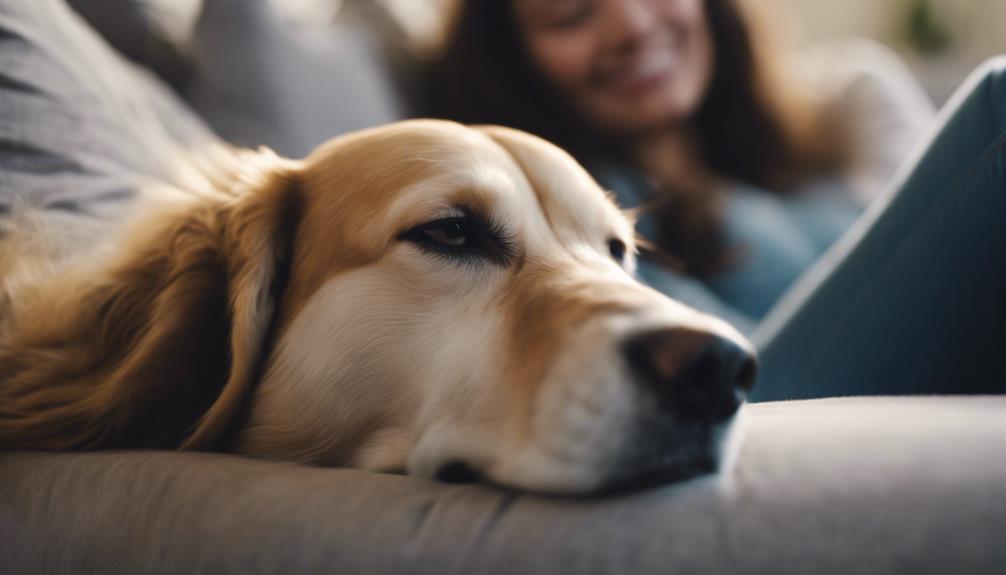
To foster a strong connection between a dog and its owner, engaging in diverse bonding activities beyond traditional cuddling is essential. These activities not only deepen the bond but also enrich the relationship in unique ways:
- Exploring New Places Together: Discovering new environments can create lasting memories for both the dog and the owner.
- Participating in Interactive Play: Engaging in play sessions strengthens the emotional connection and provides mental stimulation for the dog.
- Training and Learning Together: Teaching new tricks or commands builds trust and enhances communication between the dog and its owner.
- Sharing Quiet Moments: Simply sitting together and enjoying each other's presence can create a sense of peace and contentment in the relationship.
Positive Reinforcement Training
Fostering a strong bond between a dog and its owner can be further enhanced through positive reinforcement training techniques that promote desirable behaviors. Positive reinforcement involves rewarding your dog for good behavior, encouraging them to repeat those actions. This method focuses on praising or rewarding your dog with treats, toys, or affection when they exhibit the desired behavior, reinforcing a positive association. By utilizing positive reinforcement training, owners can effectively communicate with their dogs, build trust, and strengthen their bond.
| Benefits of Positive Reinforcement Training | Examples of Positive Reinforcement |
|---|---|
| Encourages desired behaviors | Giving treats for obeying commands |
| Builds trust between dog and owner | Praising your dog for good behavior |
| Strengthens the bond through rewards | Using toys as rewards for learning |
| Enhances communication skills | Providing affection for following cues |
Seeking Expert Advice
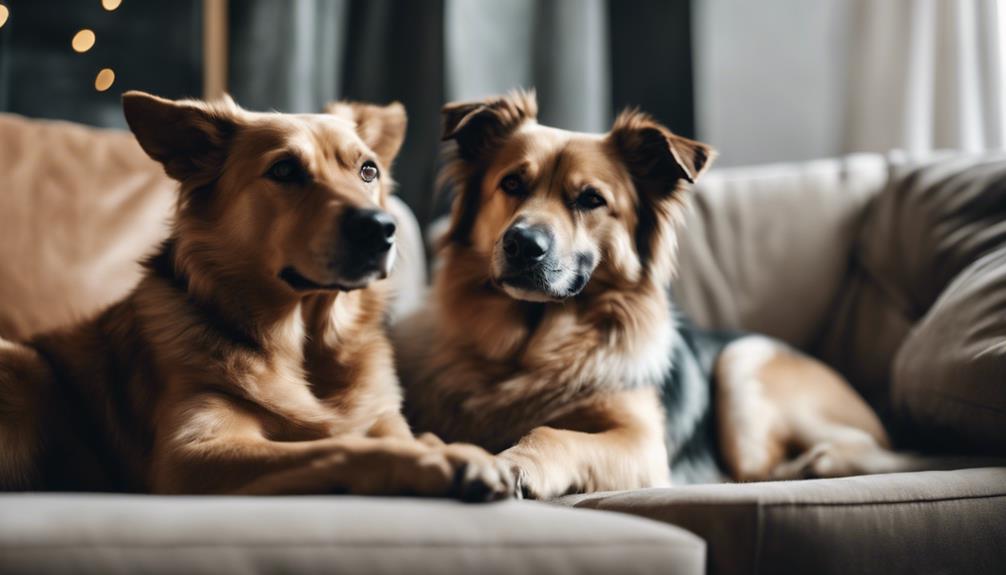
Expert guidance is essential for addressing complex behavioral issues and strengthening the bond between dogs and their owners. Seeking advice from certified animal behavior experts can provide valuable insights and tailored solutions to improve the relationship with your furry companion. Here are four reasons why seeking expert advice is crucial:
- Professional Assessment: Experts can conduct a thorough assessment to understand your dog's unique needs and behaviors.
- Customized Strategies: Experts can create personalized training plans that address specific concerns and enhance communication.
- Behavior Modification: Expert guidance can help modify undesirable behaviors and reinforce positive ones effectively.
- Long-Term Support: Professionals offer ongoing support and guidance to ensure continuous progress and a harmonious relationship with your dog.
Beyond Cuddling Activities
Exploring additional avenues for fostering a strong bond with your canine companion goes beyond cuddling activities. Engaging in activities like playtime, traveling, and waiting for their owners can deepen the connection between dogs and their human counterparts.
By participating in a dog's favorite pastimes, owners can strengthen the bond and create lasting memories. Training sessions using positive reinforcement techniques not only enhance communication but also build trust between dogs and owners.
Seeking guidance from certified animal behavior experts can provide valuable insights into effective bonding and training methods tailored to individual needs. It is essential to recognize that various activities beyond cuddling are vital for promoting a dog's physical, emotional, and social well-being, contributing to a harmonious and fulfilling relationship.
Dog's Well-being and Bonding
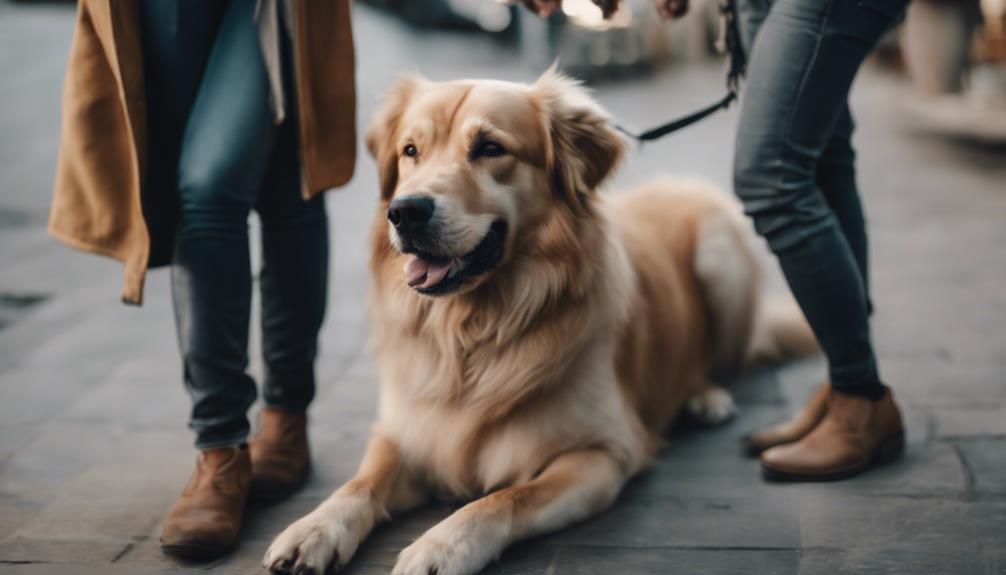
Considering the importance of a dog's overall well-being and the strength of their bond with their owners, it is crucial to prioritize activities and practices that cater to both physical and emotional needs. To ensure a dog's well-being and enhance the bond with their owner, the following activities are essential:
- Regular exercise sessions to keep the dog physically fit and mentally stimulated.
- Quality time spent engaging in play and training activities to strengthen the bond.
- Providing a balanced diet and ensuring access to fresh water for optimal health.
- Regular veterinary check-ups and grooming sessions to maintain the dog's physical well-being and prevent any health issues.
Conclusion
In conclusion, the complexities of canine cuddling behaviors are influenced by a variety of factors such as breed predispositions, past experiences, and communication cues. Understanding and respecting individual preferences is crucial in fostering strong bonds with our dogs.
By exploring alternative bonding activities and seeking expert advice, we can enhance the well-being and overall quality of life for our beloved canine companions.




